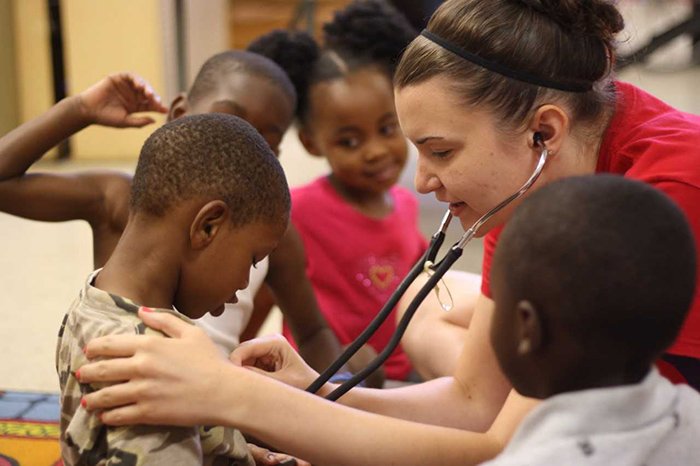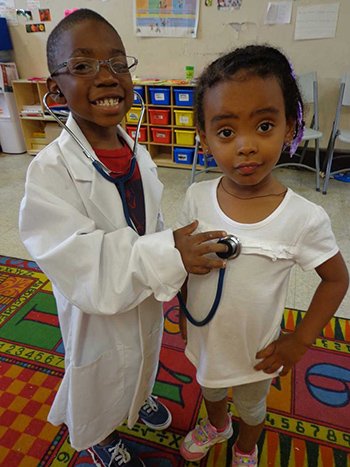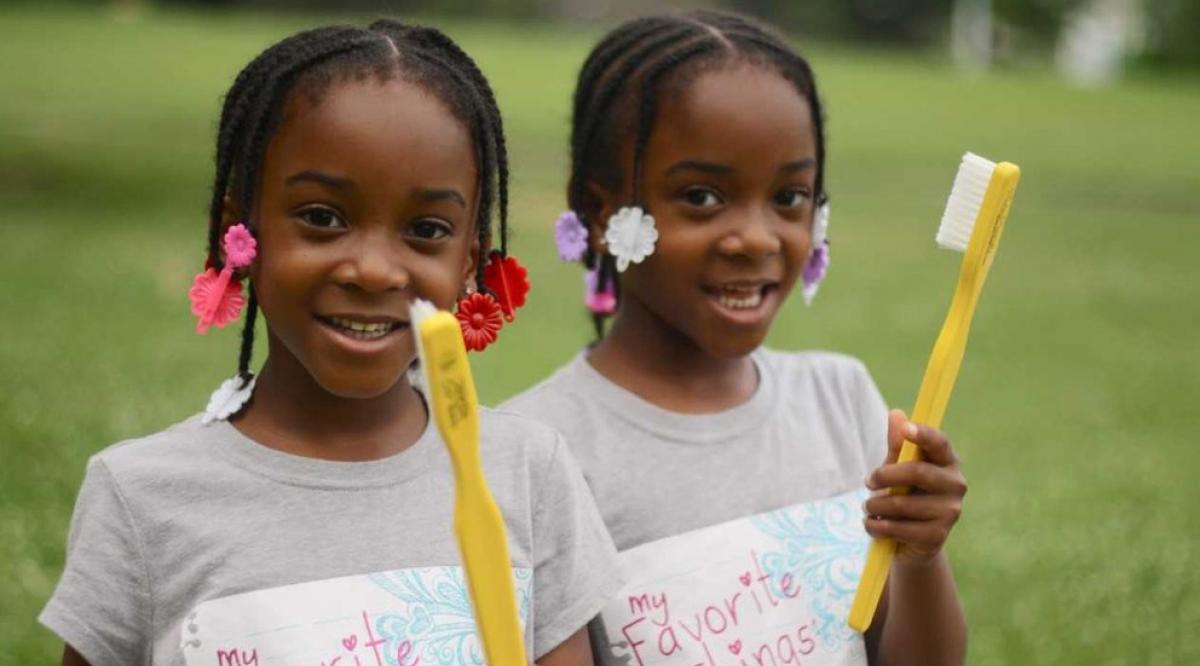The summer of 2017 was an eye-opener for Erin Tully, a second-year student at the Perelman School of Medicine at the University of Pennsylvania. Tully spent a seven-week internship at Philadelphia’s juvenile detention center as part of the Bridging the Gaps (BTG) program that places medical and other health care students in underserved communities to see firsthand how the social determinants of health affect vulnerable populations and to work with those populations.
“I’m 23 and these girls, mostly 15 to 18, have seen so much more than I have,” Tully says. “It almost frightened me. They’d been sexually assaulted, trafficked just to get by, and in and out [of the correctional system].”
“If you don’t ever see these things,” she adds, “you won’t know they exist. You won’t know the needs of the community. That can determine the whole way you look at your [future] patients. It’s very exciting because you don’t learn this in the classroom.”
BTG offers an internship program, a seminar series, and a clinical program. Whenever possible, interns work in interdisciplinary teams. “Interprofessionalism is key to addressing the needs of the people we serve,” says Lucy Wolf Tuton, PhD, BTG executive director and an adjunct professor of medicine at the Perelman School of Medicine at the University of Pennsylvania. “Students often have stereotypes about other disciplines, but by collaborating with others, those stereotypes break down and students learn the actual value added of other disciplines.”
“I’m 23 and these girls, mostly 15 to 18, have seen so much more than I have.… If you don’t ever see these things, you won’t know they exist. You won’t know the needs of the community.”
Erin Tully
Perelman School of Medicine at the University of Pennsylvania
“Working with other disciplines as part of a team—this is modern medicine. We never had that when we were in training,” says George Valko, MD, professor and vice chair of family medicine at Sidney Kimmel Medical College at Thomas Jefferson University, and a BTG academic preceptor.
BTG participants are drawn from medicine, dentistry, nursing, social work, the creative arts in therapy, occupational therapy, physical therapy, pharmacology, public health, law, the physician assistant profession, and other related fields.
“This is a completely different venue for them to learn about what community workers face, their budgets and resources, for example,” explains Valko. Students keep journals about their work and come together for weekly conferences. At year’s end, they present posters and learn from each other at a symposium.
 Bridging the Gaps
Bridging the Gaps
Expanding perspectives
BTG was established in 1991 with 18 medical students. Since then more than 5,200 students have participated. Abby Letcher, MD, who was in the first BTG cohort, is founding medical director of Neighborhood Health Centers of the Lehigh Valley where she works with BTG students. The BTG experience helps students see “with a different lens,” she notes. “Getting out of the office and out of the hospital, where we’re on our own turf, gives them a different perspective.”
 Bridging the Gaps
Bridging the Gaps
Students are matched with community organizations based on need, professional discipline, and students’ interests, and they help develop projects specifically for organizations’ client populations at 540 partnering sites.
Todd McLaughlin, a second-year student at the University of Pittsburgh School of Medicine, had a summer internship at a housing program for women with addictions. “It was eye-opening and actually a little terrifying.” He explains that the experience opened a Pandora’s box of problems he hadn't previously witnessed. “I saw how much of a struggle it was for these women to leave addiction and how relapse can occur. But we also learned how important it is to be patient, to rally, and support them.” McLaughlin, who is planning to become a family physician, says he now has “a more realistic perspective” and a much better understanding of substance abuse disorders.
“Students often have stereotypes about other disciplines, but by collaborating with others, those stereotypes break down and students learn the actual value added of other disciplines.”
Lucy Wolf Tuton, PhD
Bridging the Gaps
Entrenched in the community
 Bridging the Gaps
Bridging the Gaps
When Marjorie DeJoie-Brewer, MD, was a BTG intern in 1993, the program “helped me get entrenched in the community. It showed how we can take the skills we’re taught and apply them in the real world.” Today she is medical director for the Sickle Cell Disease Association of America, Philadelphia/Delaware Valley Chapter, a clinical researcher at the Children’s Hospital of Philadelphia, and a BTG community preceptor. She recently worked with BTG students in a pilot program designed to provide intensive disease-specific interventions for patients with sickle cell disease (SCD). Students made home and hospital visits and helped conduct blood drives for patients with SCD.
Micah MacAskill, a second-year student at the Lewis Katz School of Medicine at Temple University, worked as an intern with another medical student and a pharmacy student to teach children about science and health. “We even made a pH indicator out of red cabbage to teach them about acid and how acid in soda eats away at teeth.” But the most meaningful aspect, he says, was becoming part of the community. The children came from a nearby elementary school “that I didn’t even know was there before.” When he walks down the street now, children recognize him and he knows their names.
